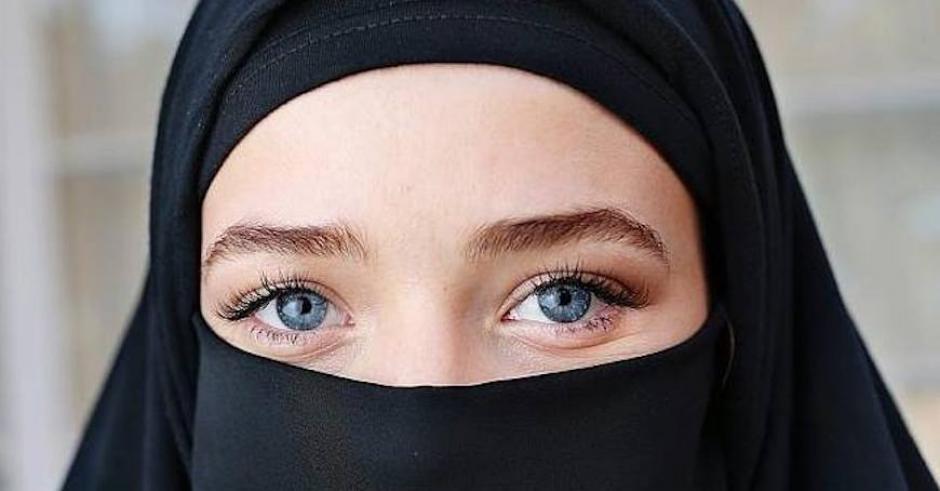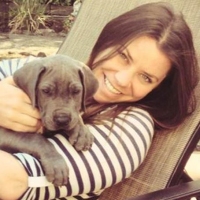 The Definition Of Irony Is IronicLiving with music in a post-ironic world.
The Definition Of Irony Is IronicLiving with music in a post-ironic world.

Actual Life Under The Muslim Veil
Want An Insight Into Life Under The Muslim Veil? Why Not Ask?
Yesterday, The Daily Telegraph sent reporter Tanya Smart to two locations in Sydney wearing a full niqab, followed by a photographer, to document the reactions of the general public. The article, titled ‘Life Under the Muslim Veil: Our Reporter’s Day Shrouded and Afraid on Familiar Streets’, recounts her experiences of racism and verbal abuse throughout the task.
Smart's piece describes lengthy deliberation of her editor's assignment - that of spending "two days in the traditional niqab dress in two different parts of Sydney to see how people would react". This is striking, as there is certainly no shortage of information displaying the reactions of white Australians to those who are visibly Muslim - just last week, harrowing accounts of Islamophobic attacks circulated widely across the internet and through word of mouth. Mosques were desecrated with anti-Islamic sentiments sprayed across the walls; Muslims were threatened, including a schoolteacher at knifepoint, harassed, abused and attacked across the nation - targeted by strangers, co-workers and acquaintances alike. Social media vitriol spread like wildfire. The headscarves of hijabi girls were forcefully torn off them in my own city of Perth, and undoubtedly many others. All attempts at segregating a national community have been working.
Perhaps the most significant response to traditional Islamic dress has been the unconstitutional call from senator Jacqui Lambie to ban it - for Smart to see the response of Australians, she need only have looked to federal parliament.
Islamic coverings - the niqab and burqa particularly - have long been under scrutiny from Westerners. The uneducated are quick to conflate the garments with 'terrorism', linking any Muslim expressing their faith through their attire to groups like ISIS (it is worth emphasising that extremist organisations do not follow Islam, and have been continuously condemned in public by religious leaders). In the height of the recent hysteria, we have seen Cory Bernardi call the burqa a "shroud of oppression", conveniently ignorant of the fact that most Muslim women wear it of their own free will. Here, the only way the burqa is a symbol of oppression is due to the reprehensible backlash faced by those who don the garment.
Smart thus proclaims the intention of her endeavour was to give 'an insight into a garment which has proven so divisive'. However, it should come as no shock that there are, in fact, plenty of Muslimah women around ready to give their own insights - insights that seem to be falling currently upon deaf ears. Contrary to her intentions, Smart's piece only serves to discount their experiences - her own voice, aided by whitewashed media, yelling louder than the Muslim women who experience unrelenting discrimination each day.
The article, though a seeming attempt at unity, still treats us as alien. "A number of people smiled at me, maybe smiles of sympathy or the only way they could hide their fears from me," Smart wonders, as though observant Muslim women could never be treated with politeness, or as human at all. She describes the attire as inflicting loneliness and a feeling of invisibility, remarking "I felt hated and completely alienated from the rest of the world, so hidden and alone". Hers is a personal essay on her experience, and there is a significant portion of negativity relating to wearing the garment itself. "I never knew what it was like not being able to smile", she muses, though this is irrelevant to her mission. "Yes, the shroud covered my skin, my hair, my eyes, my identity but what hurt most was having my emotions hidden from the world." Dear Tanya - if you find it painful, save the dress for the Muslim women who take pride and find solace in it, who willingly ascribe to a faith in which peace and modesty prevail. No one benefits from you wearing it. We do not need you to undertake a "journey posing as a Muslim woman" - we do exist, and we are valid.
Less than a week ago, a Muslim teenager in London was denied the right to continue studying at her school. This resulted only from her choice to wear the same face veil Smart wore for her article, despite no uniform or dress code prohibiting it. It is appropriative and insensitive for a woman who does not face the same discrimination based on her dress as a Muslim woman to engage in an experiment in order to comment, as Smart has done. Wearing the niqab for a few hours over the course of two days does not equate to an understanding of what devout Muslim women experience.
By dressing with modesty in a society obsessed with image and shallow beauty ideals, practicing Muslims take the focus away from their bodies and onto their words, actions and intentions. A Muslim woman derives empowerment from limiting what others see of her - whether it be an act of desexualising herself from unknown men amidst a society rife with a casually intrusive and perverse male gaze, or for something as apolitical as a preferred aesthetic. Womens' bodies have always been commodified and objectified in Western society, looked upon as possessions for trade, bid and barter. It is grossly unfortunate that the very garments Muslim women wear to defy this tradition have become entangled in a web of conflict at the hands of people who do not know or understand them. Those who argue about the burqa spread a debate drenched in prejudice and xenophobia to our bodies, treating the sanctity of our clothing as battlegrounds for politics and persecution - it is grossly unfortunate that we have become commodified in a whole new way.
The social experiment in question attempted to evoke empathy. The truth behind the matter, however, is that the verbal attacks and sense of isolation Smart faced are only relatable to her readers because she is, in fact, non-Muslim. Her struggle is palatable - an easy-to-swallow dose of the extensive, harsh reality inflicted upon Muslim women by an increasingly Islamophobic society.
Further problematic is the Daily Telegraph's inability to distinguish between the niqab and burqa, despite commissioning and running an article featuring the former. Their Facebook post regarding the story, and a photograph caption within the article ("Tanya Smart wearing a burqa in Haldon St Lakemba"), labels Smart's attire a burqa when it is, in fact, a niqab. The garment is acknowledged as a niqab by Smart herself throughout the piece, showing the Telegraph's error as symptomatic of a wider misrepresentation of Islamic culture by mass media. It is easy to draw in readers with sensationalism and homogenisation - and the Telegraph, when deconstructed, appear to be using elements of both. The publication have also tried the concept before with "My Day Under Cover as a Muslim Woman", a 2011 article by Clementine Cuneo, which begs questioning: if the Telegraph are so intent on revealing the experiences of a woman in conservative Islamic dress, why not allow a Muslim woman to? There is an easy way to find out the experiences of a Muslim woman who leaves the house dressed only in certain attire - ask.
Smart's story serves only as another reminder of mainstream media's habitual silencing of minority voices, to raise those of the uninformed on a pedestal. It is odd that those who do not encounter discrimination based on facets of their identity like race or religion are so often the ones to write about it. It is ironic, then, that her piece was supposed to encourage understanding between non-Muslim and Muslim populations. If you want to encourage diversity and acceptance through the media, start by implementing diversity and acceptance within the media.
This article originally appeared on New Matilda, but Somayra wanted to share her story with Pilerats readers - something we feel is pretty important.
 The Definition Of Irony Is IronicLiving with music in a post-ironic world.
The Definition Of Irony Is IronicLiving with music in a post-ironic world.
 Brittany Maynard & EuthanasiaSome thoughts on the terminally ill brain cancer patient and the right to euthanasia.
Brittany Maynard & EuthanasiaSome thoughts on the terminally ill brain cancer patient and the right to euthanasia.